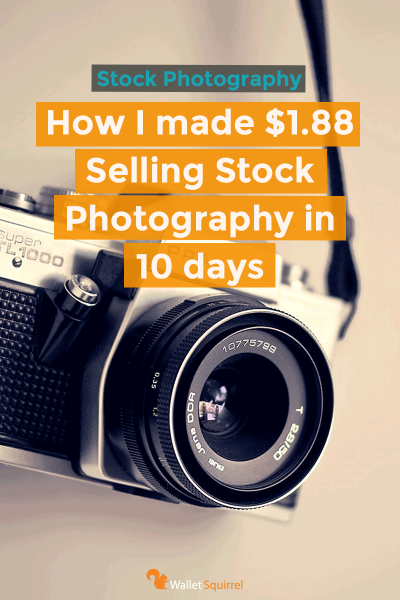Introduction to My Shutterstock Journey
Submitting 1000 photos to Shutterstock was an eye-opening experience that taught me valuable lessons about photography, curation, and the stock photo marketplace. Throughout this journey, I faced challenges and triumphs that helped shape my understanding of what it takes to be successful as a contributor. I did not just focus on taking beautiful pictures; I also learned the significance of understanding market trends, audience needs, and the technical aspects that can make or break a submission. This experience has provided me with insights that I wish to share with aspiring photographers.
The Importance of Quality Over Quantity in Photo Submissions
One of the most significant lessons I learned is that quality truly trumps quantity in the world of stock photography. While it might be tempting to submit as many images as possible in hopes of finding success, I realized that curating a collection of high-quality images yields far better results. Here are several key aspects that underscore this principle:
- Market Demand: Researching trending topics and themes helped me understand what buyers are looking for, allowing me to tailor my submissions effectively.
- Technical Excellence: Focusing on lighting, composition, and resolution significantly increased my chances of being accepted and sold. Images should not only be visually appealing but also technically sound.
- Unique Perspectives: Standing out in a saturated market is crucial. Unique angles or concepts can make a photo more memorable and sought after.
- Post-Processing Skills: Learning photo editing techniques improved the overall quality of my submissions, ensuring that they met Shutterstock’s standards.
In conclusion, while submitting a large number of photos might seem beneficial, prioritizing quality resulted in improved visibility, more sales, and a more fulfilling creative process.
Strategies for Effective Keywording and Tagging
Keywording and tagging your photos effectively is crucial for maximizing their visibility on Shutterstock. After submitting 1000 photos, I learned that the right keywords can make all the difference in whether your images are discovered by potential buyers. Here are some of my key strategies:
- Be Specific: Use precise keywords that reflect the content of your image. For example, instead of just “flower,” consider using “red rose in bloom.”
- Think Like a Buyer: Put yourself in the shoes of your potential customers. What terms would they type in when searching for images? This mindset can guide you in selecting your keywords.
- Use All Available Tags: Shutterstock allows you to add up to 50 keywords per image. Use this space wisely! Aim to include as many relevant keywords as possible without being spammy.
- Mix General and Specific Tags: Combine broader terms with niche-specific keywords. For example, “landscape” could be complemented with “sunset over mountains.”
- Research Trends: Keep an eye on current trends in photography and stock image demand. Tools like Google Trends or even social media can provide insight into popular topics.
Lastly, consider revisiting your keywords regularly. As the market and customer needs change, your tagging and keyword strategies should adapt to stay relevant.
How to Promote Your Shutterstock Portfolio
Promoting your Shutterstock portfolio is essential to boosting visibility and increasing sales. Here are some techniques that I’ve found particularly useful after my extensive photo submission journey:
- Leverage Social Media: Share your best photos on platforms like Instagram, Facebook, and Twitter. Use relevant hashtags to increase visibility, and consider joining photography groups to showcase your work.
- Create a Personal Website: Establishing a personal website or blog can serve as a portfolio hub. You can showcase your Shutterstock images and link back to them for potential buyers to discover.
- Engage in Photography Communities: Join online forums and communities for photographers. Engaging with fellow photographers and sharing your insights can lead to additional exposure and valuable connections.
- Utilize Email Marketing: If you have an existing email list or are willing to start one, send out newsletters that highlight your latest uploads and any special promotions. This keeps your audience informed and engaged.
- Collaborate with Other Creatives: Teaming up with bloggers, influencers, or brands who need visuals can help you reach a broader audience. When they promote your images, your portfolio gets more exposure!
Remember, consistency is key. Regularly promoting your portfolio not only helps in getting noticed but also builds your reputation as a dedicated photographer within the stock image community.
Lessons Learned and Tips for Aspiring Contributors
Submitting 1000 photos to Shutterstock has been more than just a numbers game; it’s taught me invaluable lessons that I think every aspiring contributor should consider. Here are some key takeaways and tips based on my journey:
- Quality Over Quantity: While it might be tempting to rush and submit as many photos as possible, focusing on quality is crucial. Ensure that each image is technically sound, well-composed, and has a unique perspective.
- Understand Keywords: Effective keywording is vital for visibility. Spend time learning about how to choose relevant keywords that accurately represent your images while also being searchable. Use tools like Google Trends to see what’s popular!
- Diversify Your Portfolio: Don’t limit yourself to one style or subject matter. Experiment with different themes, genres, and techniques to reach a broader audience. Consider trends in stock photography and try to align your submissions with what buyers are looking for.
- Be Consistent: Regularly updating your portfolio keeps you engaged with the platform and helps build momentum. Develop a submission schedule that works for you and stick to it.
- Learn from Rejections: Not every photo will be accepted. Instead of getting disheartened, view rejection as an opportunity for learning. Pay attention to feedback and make improvements where necessary.
Finally, connect with other contributors and professionals in the field. Engaging with a community can provide support, insight, and inspiration that will propel your stock photography journey forward!
Conclusion and Future Plans in Stock Photography
Reflecting on my experience of submitting 1000 photos to Shutterstock, I can confidently say it’s been a transformational journey. The lessons I’ve gleaned from this process go beyond just improving my photography skills; they have shaped my perspective on creativity and business as a whole.
As I move forward, my plans in stock photography are both ambitious and exciting:
- Expand My Portfolio: I aim to diversify my work even further, especially by exploring niches like aerial photography and lifestyle portraits. Keeping an eye on market trends will guide my choices on what to shoot next.
- Engage with New Markets: I’m interested in exploring international markets, as some regions have different needs and preferences. This could open up new avenues for sales!
- Invest in Education: I plan to take more courses on photography and post-processing techniques. The more I learn, the better I can serve my audience with high-quality content.
Ultimately, my journey in stock photography is just beginning, and I can’t wait to see where it leads. If you’re considering this path yourself, remember that every photo submitted adds up to a larger body of work, and every experience is a stepping stone towards mastery. Here’s to capturing the world, one image at a time!


